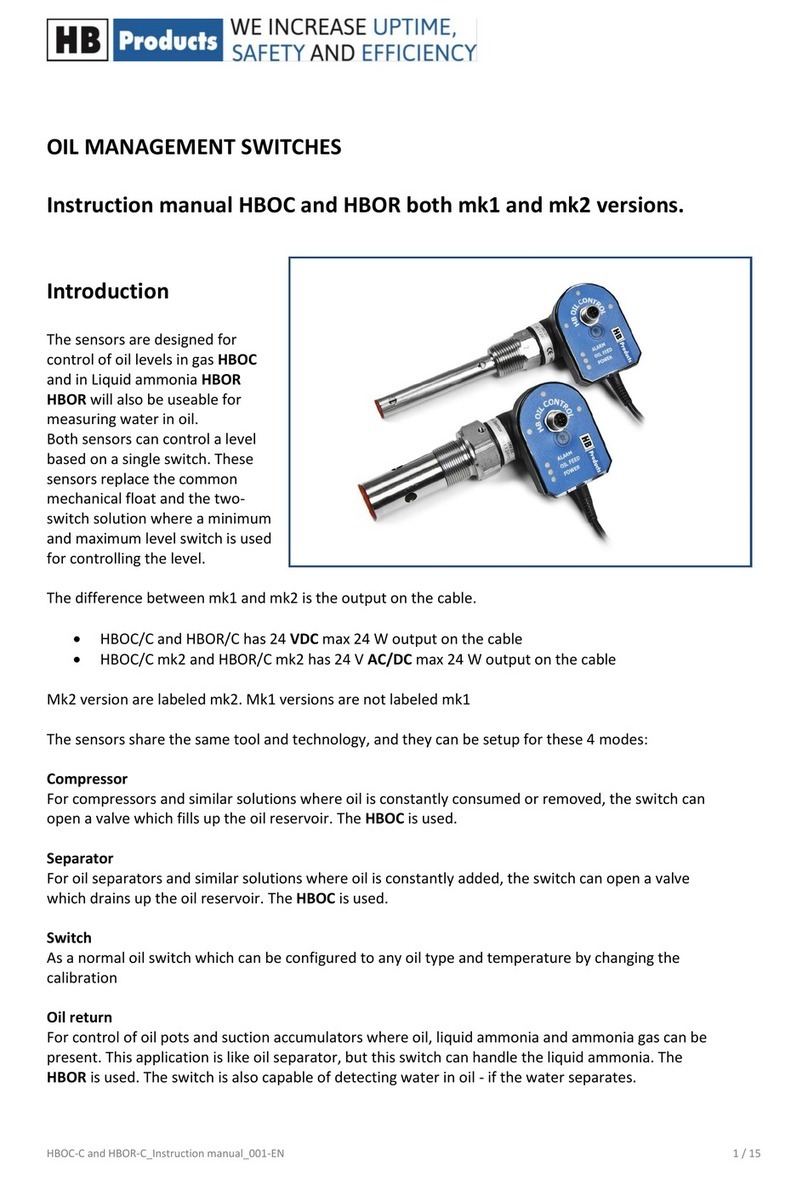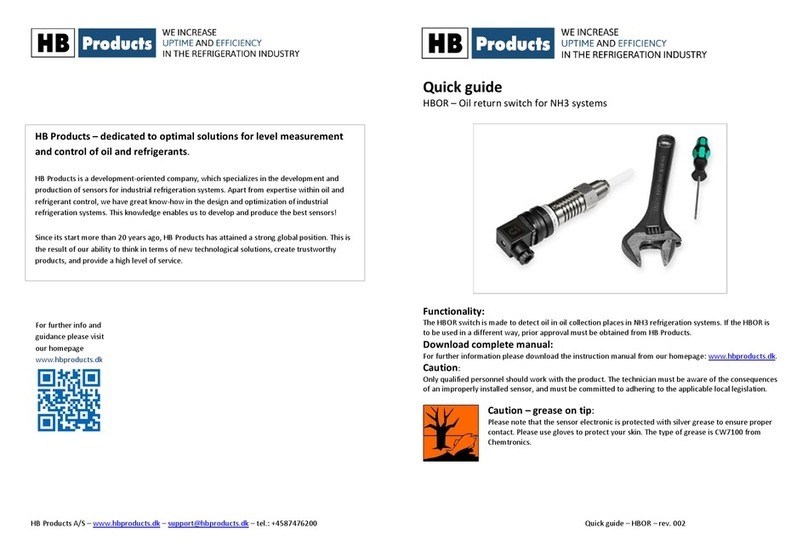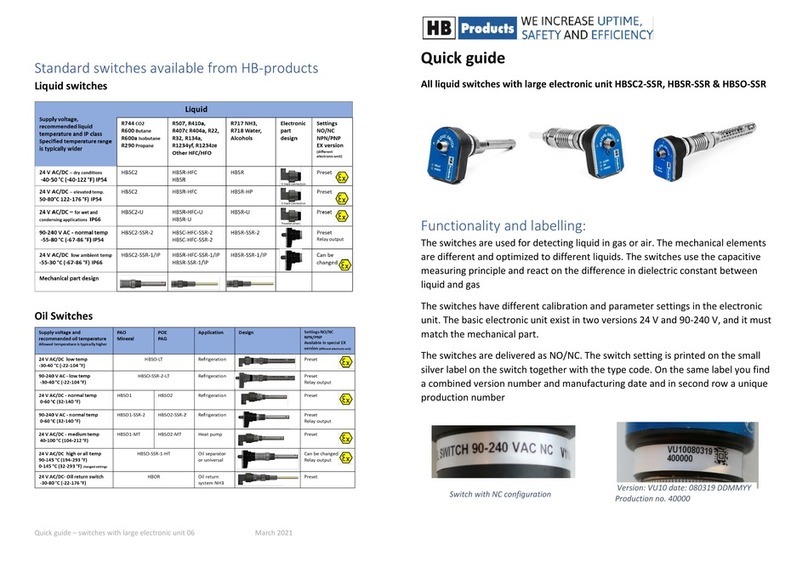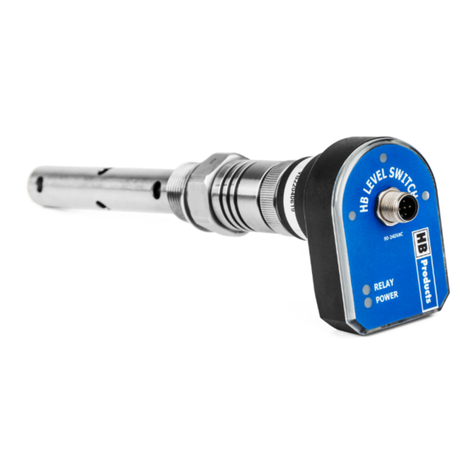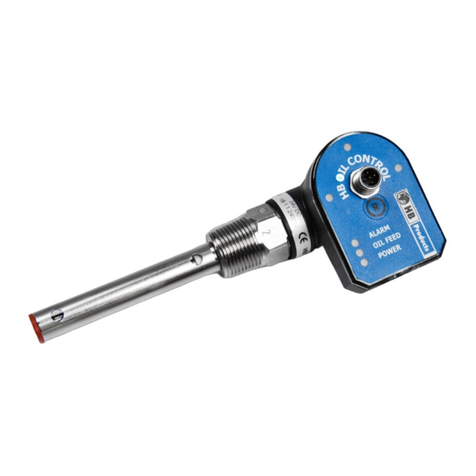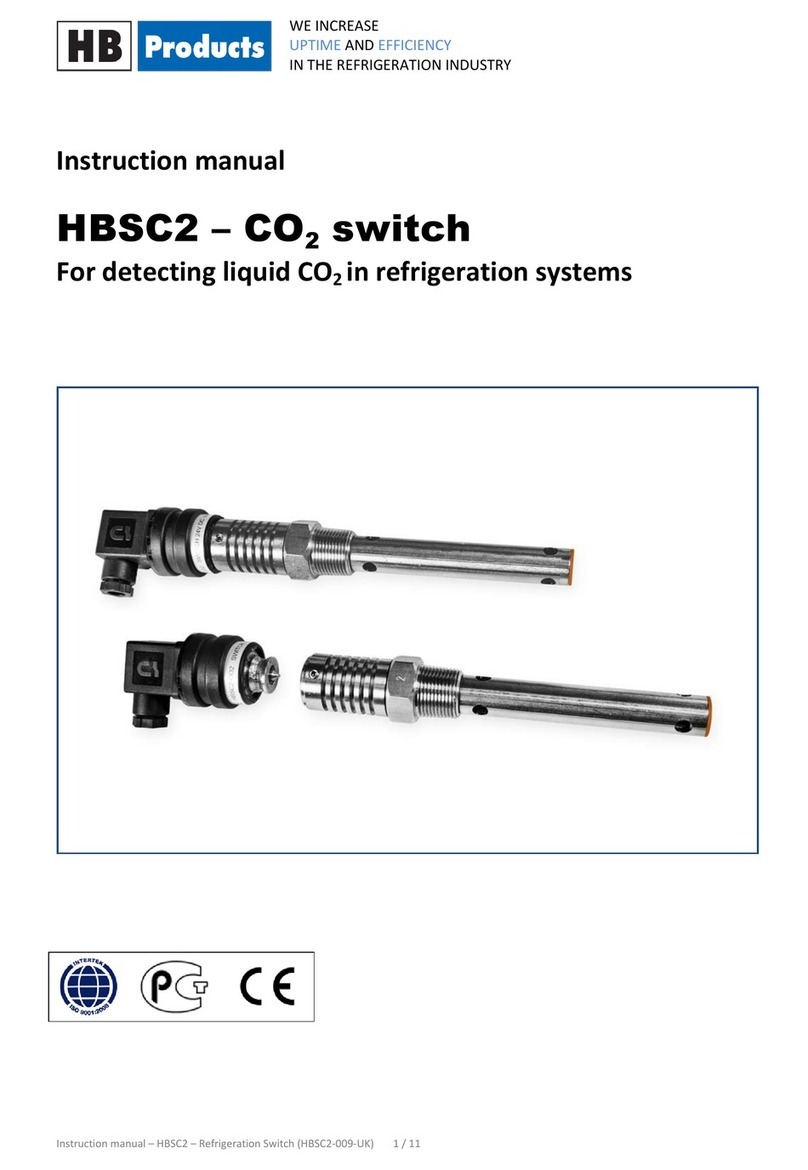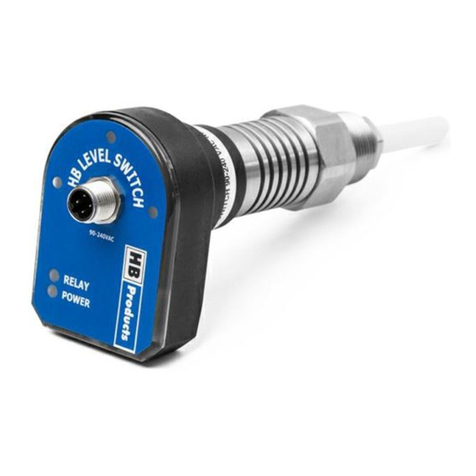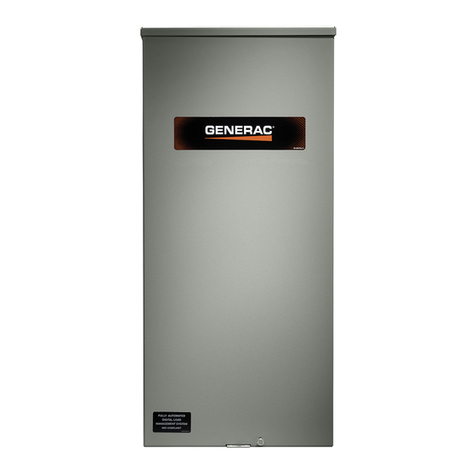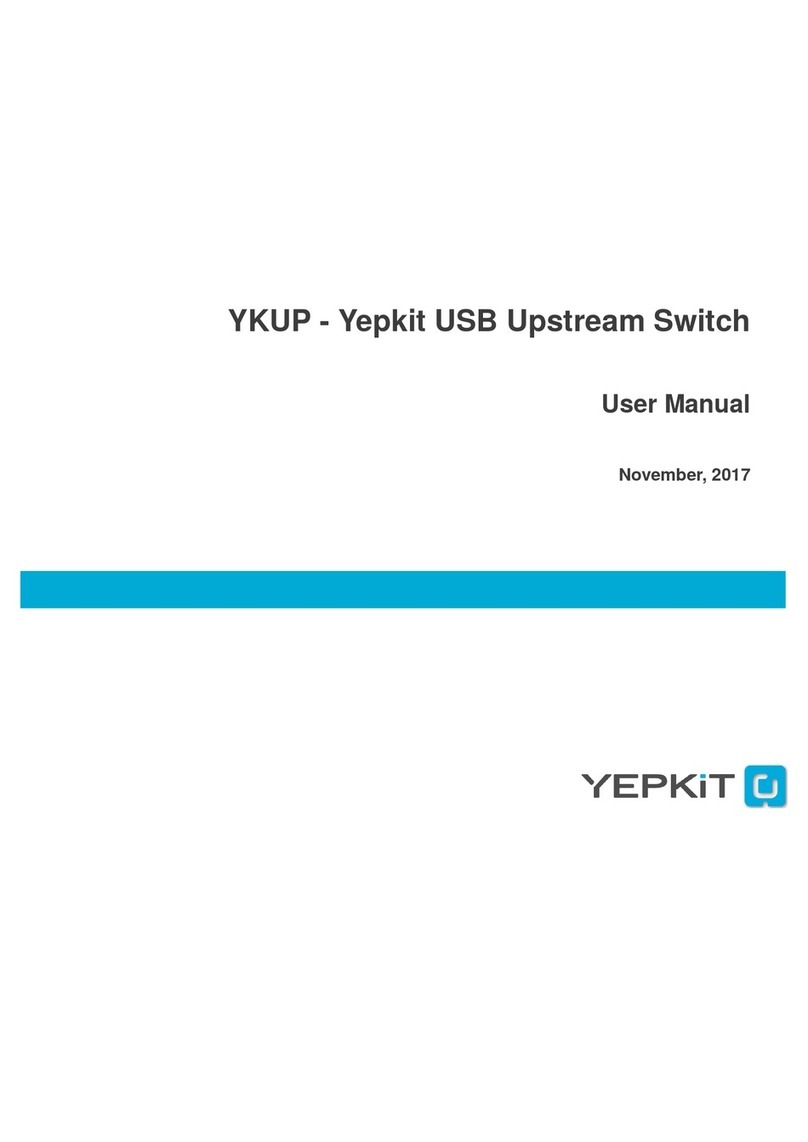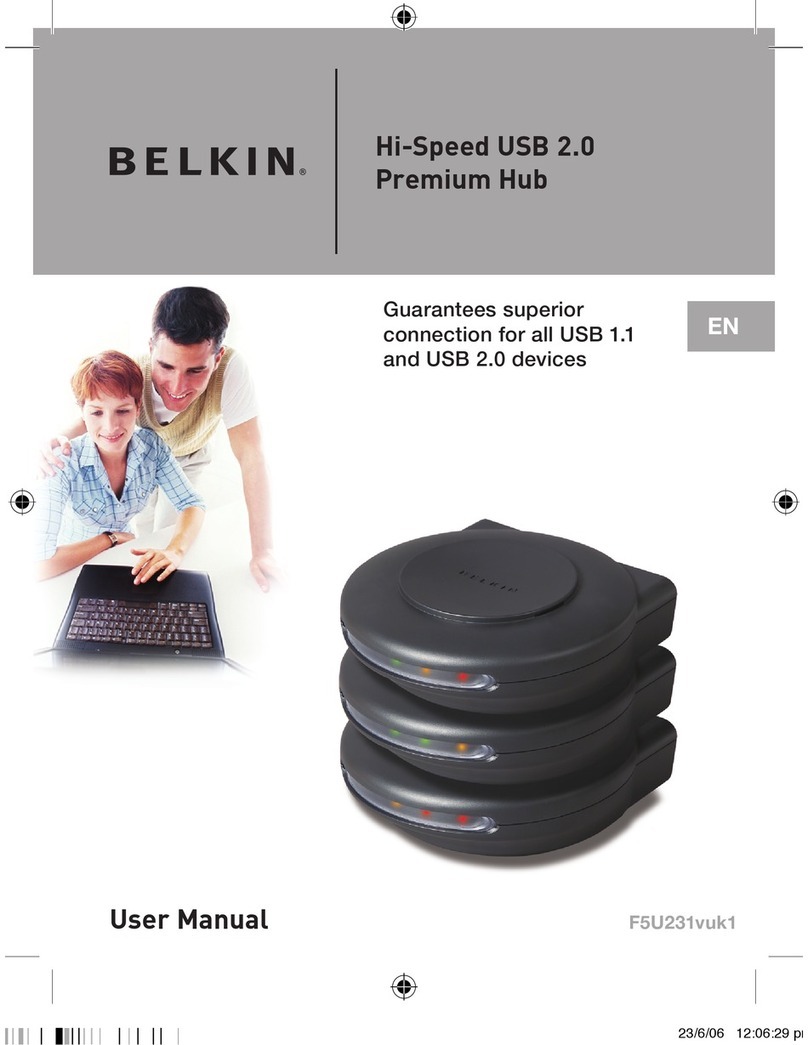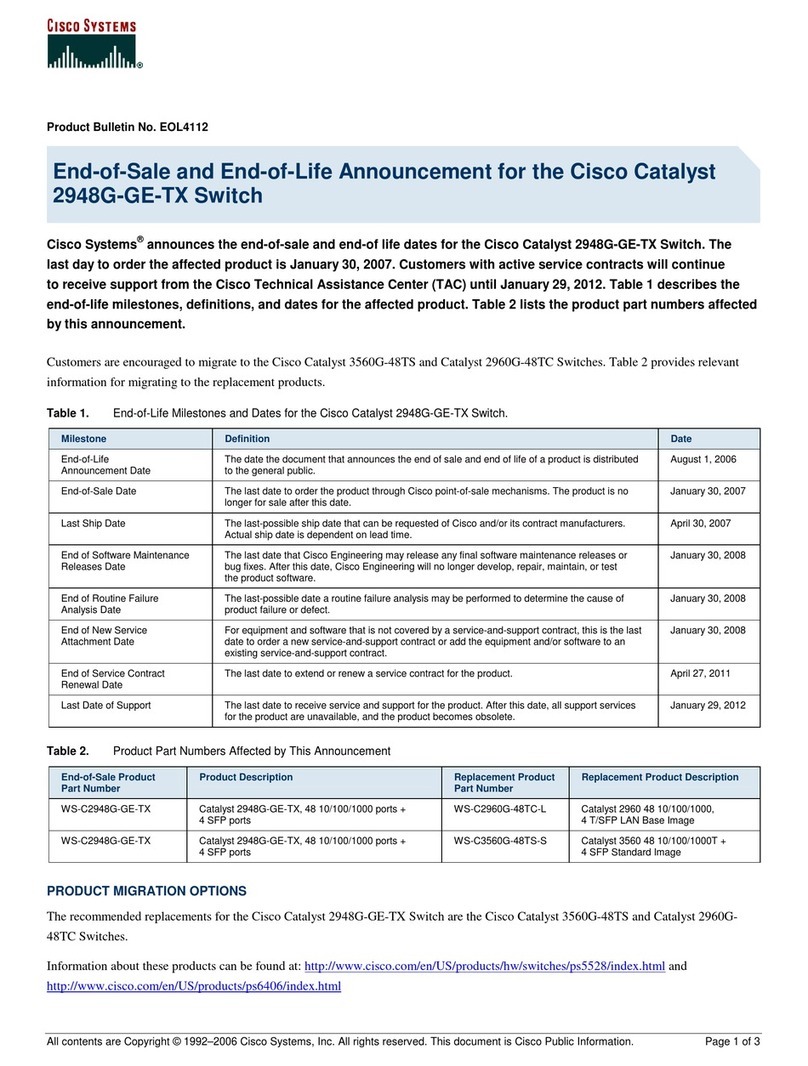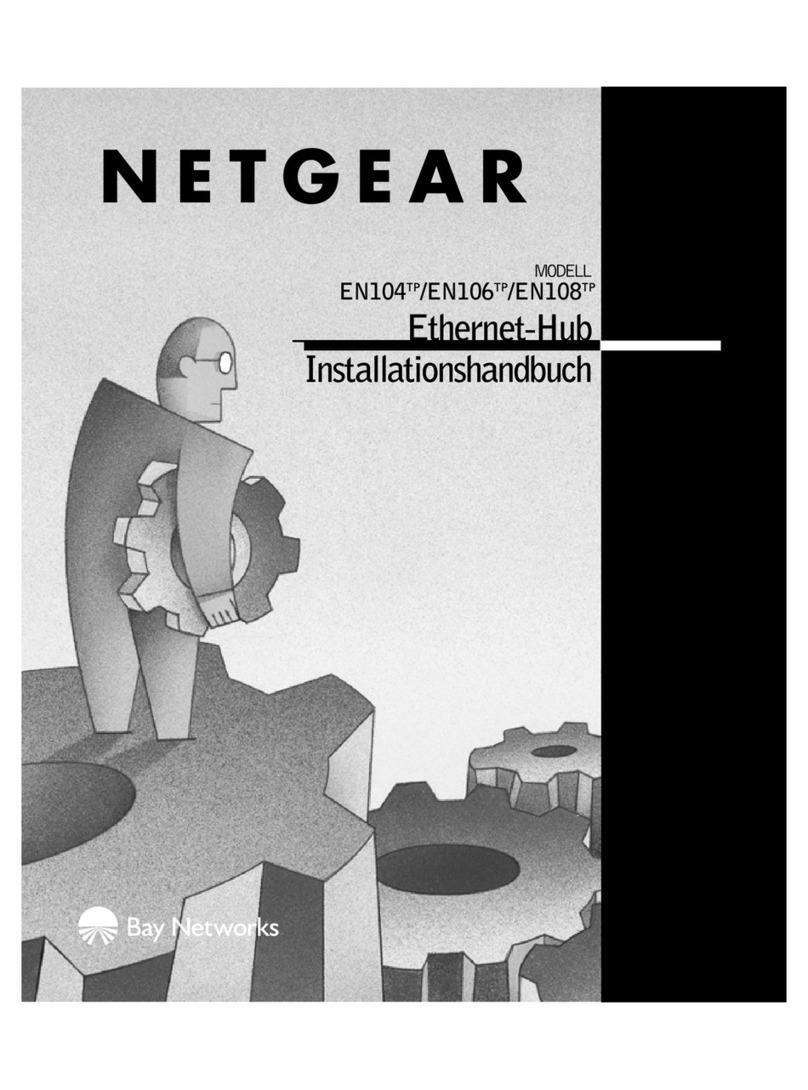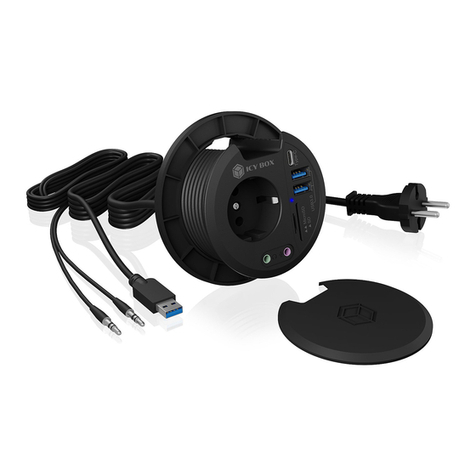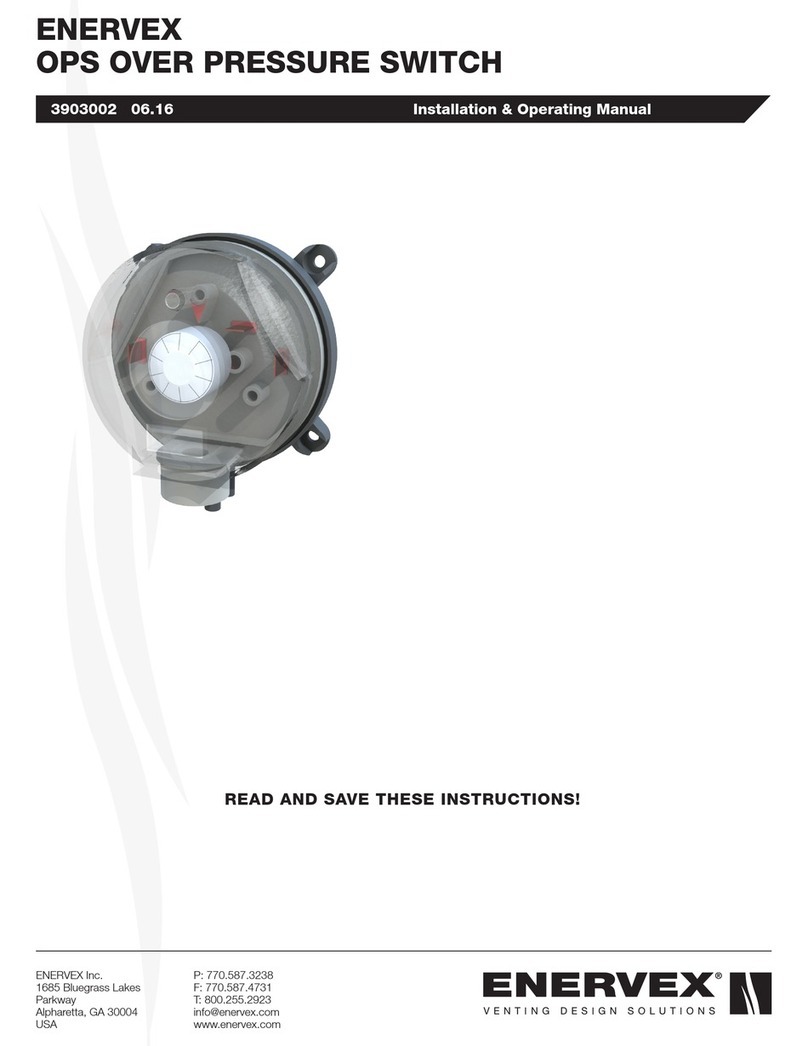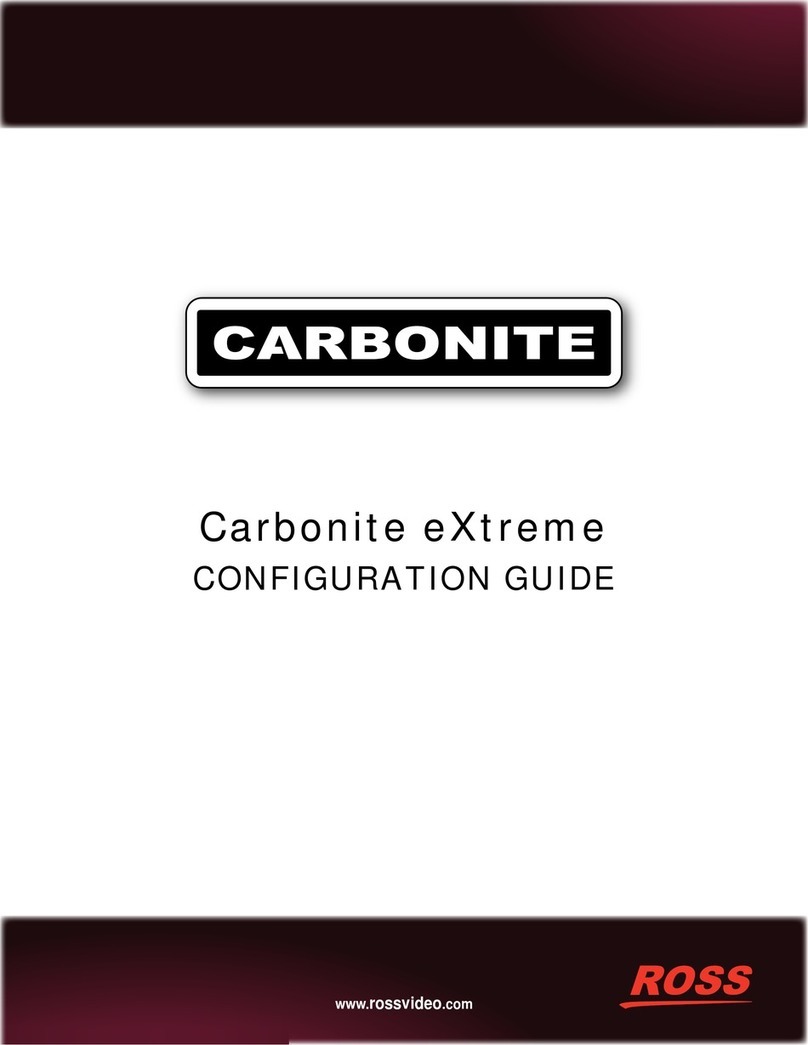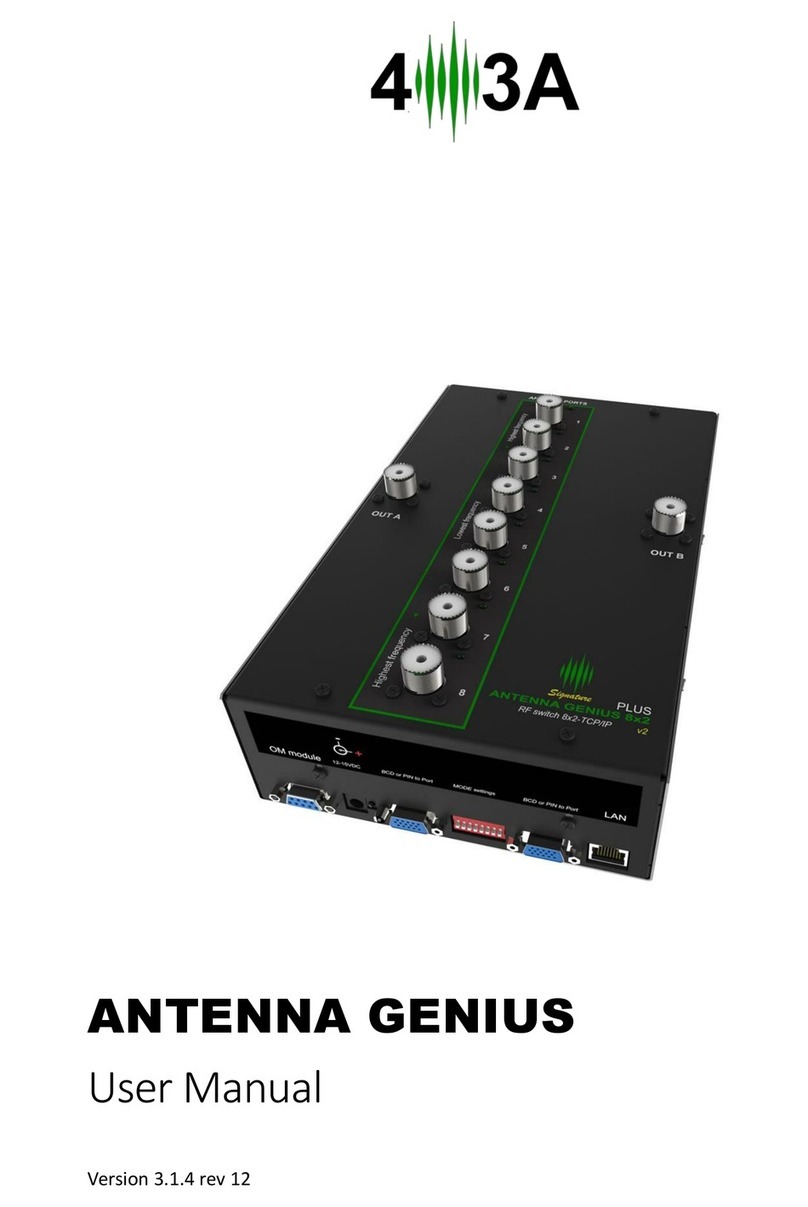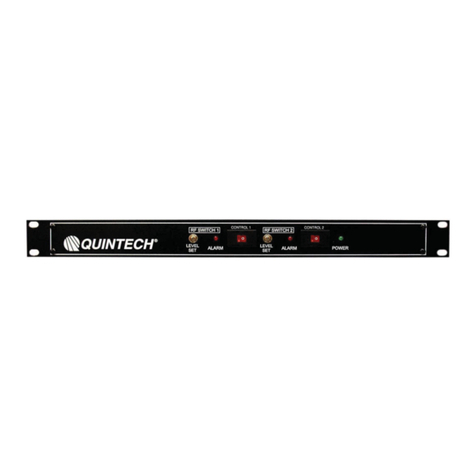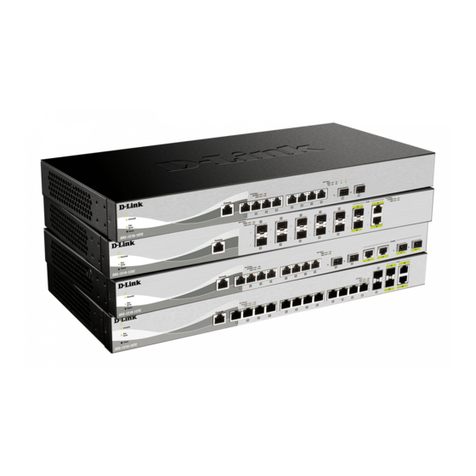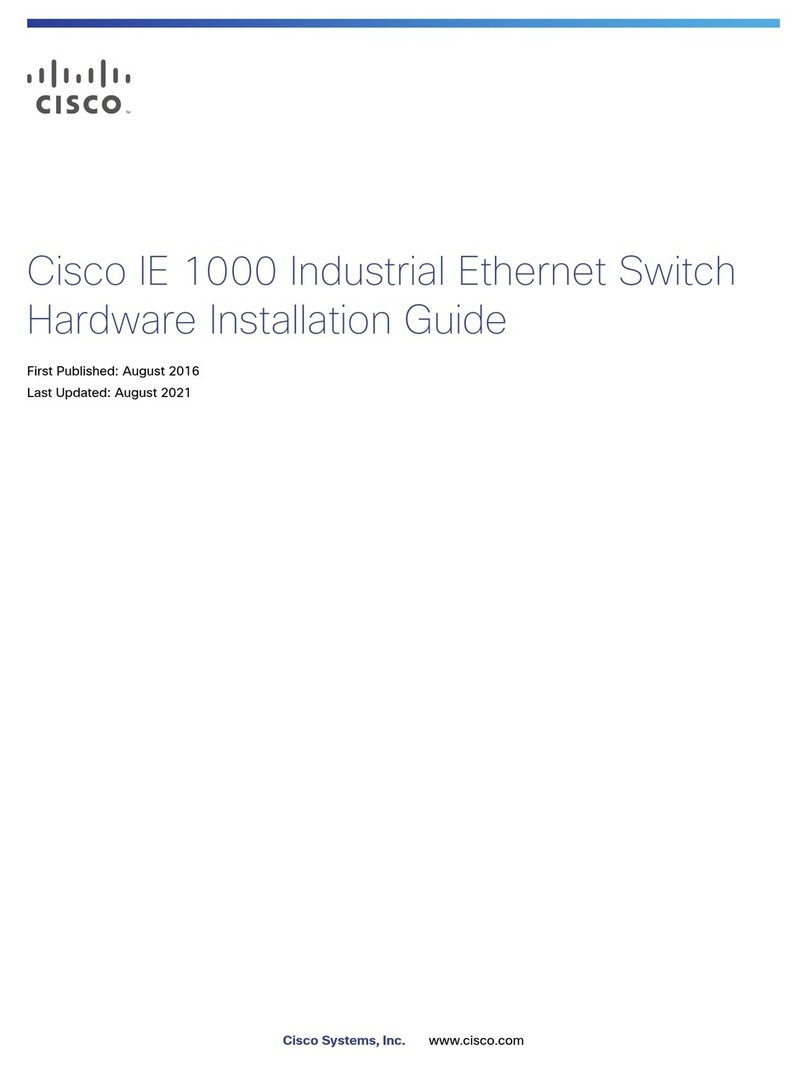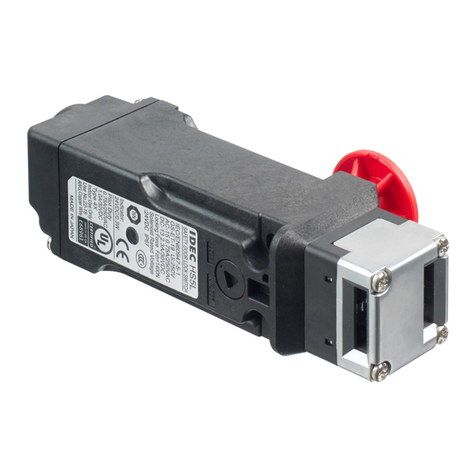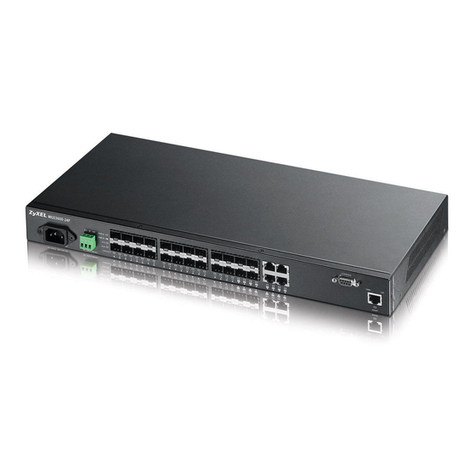UPTIME AND EFFICIENCY
IN THE REFRIGERATION INDUSTRY
Introduction
HBSR is a level switch for detection of liquid
refrigerants, including NH3 , HFC and brine.
Typically it is installed in/on the reciever, pump
separators, economisers, heat exchangers, or as
an oil-accumulation-alarm in ammonia systems.
The sensor's measurement principle makes it
unique for these purposes, since the properties
of the measurement principle enable it, among
other things, to detect phase separation between
oil and ammonia.
The sensor is also built to resist high pressure and
low temperatures.
HBSR is not suited for use on CO2systems. Here
the HBSC2 switch type must be used.
Measurement principle
The sensor is a capacitive sensor. The capacitive measurement principle is based on the electrical
properties in the proximity of a capacitor. A capacitor is an electrical component that is capable of building
and sustaining an electrical charge.
Principally, a capacitor consists of two plates.
When a charge is applied to a plate, the other
plate will be charged with the opposite polarity
and retain the charge until it has been grounded.
The magnitude of the charge (the capacitance)
that can be generated depends, among other
things, on what is found between the plates.
The substance between the plates is referred to
as a dielectric.
Rather than two plates, the sensor for level
measurement is shaped as a cylindrical rod.
When liquid covers the sensor, the measured
capacity changes.
The conductivity of a material can vary depending
on temperature, chemical composition, and the
homogeneity of the material, and therefore it can
in some cases require a different factory
calibration.
HB Products sensors are calibrated so that they differentiate between conductive and non-conductive
liquids.
In refrigeration systems, the oil, HFCs and liquid CO2are not regarded as conductive fluids, whereas
refrigerants such as ammonia, and brine are regarded as conductive.
Design
The sensor consists of a mechanical part and an electronic part. These are easily separated by loosening 2
grub screws, or for mechanisms with mounting tabs, by pressing the electronic part in towards the
mechanical part and turning the housing counter-clockwise until a wave washer presses it out of the
mounted position. The electronic part is designed in accordance with IP65 waterproof rating and so as to
withstand vibrations. The mechanical part is produced in AISI304/PTFE and tested to withstand high
pressure.












